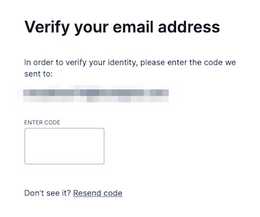Email Validation in PHP: A Comprehensive Guide
Email validation is a critical step in web development, ensuring that the data entered by users is accurate and functional. In PHP, email validation can prevent errors, reduce spam, and improve user experience. Whether you are handling form submissions or building a contact system, mastering email validation is essential. In this article, we’ll explore how to effectively use email validation in PHP, why it’s important, and the various methods available.
Why is Email Validation Important?
Email validation is crucial for several reasons:
- Data Accuracy: It ensures that users provide correct email addresses. Incorrect or misspelled addresses can lead to undeliverable messages and communication gaps.
- Security: Email validation helps filter out malicious inputs that can lead to vulnerabilities like SQL injection or XSS (Cross-Site Scripting).
- Reduce Spam: By validating email addresses, you can significantly reduce the chances of your system being abused by bots or spammers.
- Improve User Experience: Users appreciate feedback when they enter incorrect data. Validating emails helps guide them to enter proper information.
Now that we understand the importance, let’s explore the different techniques of email validation in PHP.
Methods of Email Validation in PHP
PHP offers multiple ways to validate an email address, from simple regex patterns to built-in functions. Below are some commonly used methods:
1. Validating Email with filter_var()
One of the easiest and most efficient ways to validate an email in PHP is by using the built-in filter_var() function. It checks if the given input matches the structure of a valid email address.
Example:
$email = "user@example.com";
if (filter_var($email, FILTER_VALIDATE_EMAIL)) {
echo "Valid email address.";
} else {
echo "Invalid email address.";
}
This method ensures that the email conforms to the standard format (e.g., user@example.com). It’s a simple but effective way to validate user inputs.
2. Using Regular Expressions (Regex)
For more complex validation, you can use regular expressions. This method provides more control over the format and allows you to define custom validation rules.
Example:
$email = "user@example.com";
$pattern = "/^[a-zA-Z0-9._%+-]+@[a-zA-Z0-9.-]+\.[a-zA-Z]{2,}$/";
if (preg_match($pattern, $email)) {
echo "Valid email address.";
} else {
echo "Invalid email address.";
}
While filter_var() covers most of the validation needs, regex allows you to tailor the validation process to your specific requirements.
3. Domain Verification
To ensure the email domain actually exists, you can verify the domain using checkdnsrr(). This function checks if there are DNS records for the domain in the email address.
Example:
$email = "user@example.com";
$domain = substr(strrchr($email, "@"), 1);
if (checkdnsrr($domain, "MX")) {
echo "Domain is valid.";
} else {
echo "Invalid domain.";
}
Domain validation adds an extra layer of reliability, ensuring that the email address not only follows a valid format but also refers to an active domain.
4. Combining Multiple Validation Techniques
For robust email validation, you can combine the methods discussed above. Start by using filter_var() to ensure the email has a valid structure, followed by checkdnsrr() for domain verification.
Example:
$email = "user@example.com";
if (filter_var($email, FILTER_VALIDATE_EMAIL)) {
$domain = substr(strrchr($email, "@"), 1);
if (checkdnsrr($domain, "MX")) {
echo "Valid email address with a valid domain.";
} else {
echo "Invalid domain.";
}
} else {
echo "Invalid email address.";
}
This approach ensures comprehensive validation by checking both the format and domain existence.
Preventing Common Pitfalls in Email Validation
While validating emails, developers often fall into a few traps. Let’s discuss how to avoid these mistakes.
1. Only Checking Syntax
One common pitfall is to only check the email’s syntax without verifying the domain. Even if the format is correct, the domain might not exist. Always pair syntax checks with domain verification for more accurate results.
2. Skipping Real-Time Validation
Whenever possible, implement real-time validation. This means validating the email as soon as the user enters it, rather than waiting for form submission. Real-time feedback improves user experience and encourages correct input.
3. Not Sanitizing Input
Never assume that user input is safe. Always sanitize the email address before using it in your application to prevent injection attacks.
Example:
$email = filter_var($_POST['email'], FILTER_SANITIZE_EMAIL);
Sanitizing input before validation ensures that harmful characters are removed, reducing security risks.
Advanced Techniques for Email Validation
1. Using Third-Party Libraries
If your application needs more advanced email validation, consider using third-party libraries such as EmailValidator. These libraries provide more comprehensive validation options, including disposable email detection, domain existence, and even SMTP validation.
2. SMTP Validation
Another advanced technique involves connecting to the email server via SMTP to verify whether the email address exists. This method, while resource-intensive, offers the highest level of validation accuracy.
3. Disposable Email Address Detection
Some users may try to register using disposable or temporary email addresses. To combat this, you can use services like Kickbox or ZeroBounce to detect and block disposable email addresses.
Email Validation Best Practices
- Use filter_var() for Basic Validation: It’s a reliable and simple method for validating email addresses in PHP.
- Combine Syntax and Domain Checks: Always check both the email format and domain to ensure maximum accuracy.
- Sanitize Input: Before storing or using the email address, sanitize it to remove any unwanted characters.
- Provide Real-Time Feedback: Implement real-time validation to improve the user experience and reduce submission errors.
- Avoid Over-Validating: While validation is important, avoid overly strict rules that may block legitimate email addresses.
Conclusion
Email validation in PHP is a fundamental process for ensuring accurate user inputs and protecting your application from vulnerabilities. By using methods like filter_var(), regular expressions, and domain verification, you can create a robust validation system that enhances both security and user experience. Whether you’re building a contact form or a registration system, mastering email validation techniques will help you avoid common pitfalls and improve the quality of your PHP applications.
